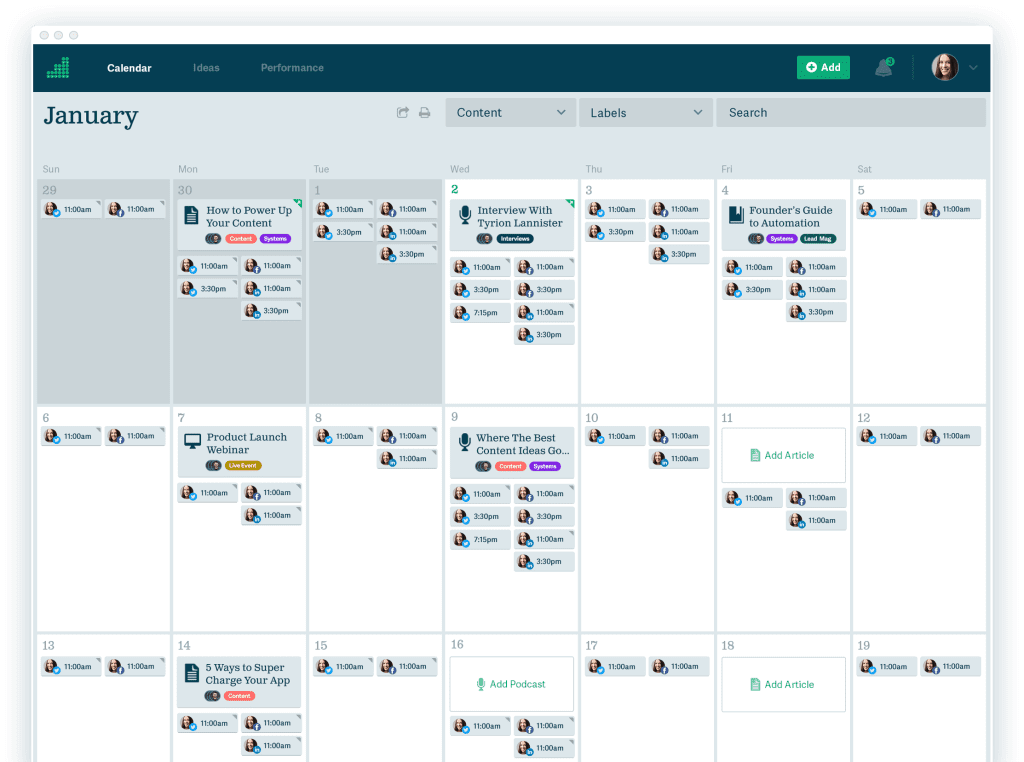This is part of our series on hub & spoke content marketing. Begin here: Executing The Hub & Spoke Content Marketing Strategy
Most companies use the same outdated blogging process: They brainstorm a topic and delegate to a writer. They never consider the next topic until the first one is published. This method does a fine job of creating web pages, but it doesn’t deliver much value to readers.
The hub and spoke content marketing strategy is a system of building packages of content where articles relate to one another. It’s a unique way to entice readers to visit more of your pages and receive powerful education, but it requires significantly more planning than traditional blogging. Marketing expert Jimmy Daly puts it nicely:
“Blog posts are often not strong enough to survive on their own. But if they are grouped (and linked) together strategically, they can thrive.”
It’s critical that you plan the entire hub and spoke strategy before you begin creating your content. You should have an editorial calendar in place that outlines the hub as a whole, as well as each of your spoke articles. This is to ensure that you cover your main topic completely.
If you come up with ideas for more spokes that fit into your strategy, that’s fine. A hub and spoke strategy can have as many spokes as you like. But your foundation has to be in place before you start creating.
Start With the Problems

As a SaaS business, it’s unlikely that a visitor will browse your website just for fun. Entertainment sites have that luxury, but not you. Your content has to attract people, often through a search engine. This means your content has to solve problems.
Everyone has problems. Some problems are bigger and more urgent than others, but everyone has them. Your job is to identify the problems of your audience and create solution-based content that attracts those searchers. Those problems will serve as the basis for your hub’s topic.
If you haven’t, you should create buyer personas (audience personas, customer profiles – they are all the same thing) for each type of customer you serve. This will create a clear picture of the type of people you want to attract to your website.
Include common problems with each persona. What challenges do your customers face? What solutions do they need immediately or soon? How can their business and life be made better/easier/cheaper? Identify and rank the customers’ problems from most to least dire. These are your hub topics.
Here’s an example: Acme is a company with a software product that helps businesses capture and use data. They are targeting businesses of at least 25 employees who do more than $3 million per year in revenue.
Acme knows that their customers’ biggest problem is an inability to make changes to their business once they have data, so they create a hub titled “How to Turn Your Data into Actionable Insights That Add Business Value.”
Within this topic there are plenty of subtopics for Acme to dive into. They could implement a hub and spoke strategy here.
They key is that Acme’s target customers are actively searching for ways to get the most value from their data. They’ll find Acme’s content, realize its value, and acknowledge Acme as an authority on the topic. They’ll subscribe (now they are leads!) to receive additional content in the future. Eventually they’ll buy Acme’s product because they trust Acme to deliver the results their business needs.
Hub Topic Requirements
Before you commit to a topic for your hub, it needs to meet a few requirements.
1. You should know the topic fairly well.
You and your writing team should understand your topic well enough to speak intelligently about it. Even though your writers will do some research (at least they should), it’s best that everyone is familiar with the core concepts. Transfer as much knowledge as you can to your writing team. If a topic is completely foreign to you, choose something else. (At Audience Ops, our done-for-you content marketing service has a unique approach to learning about your business).
2. The topic should be big enough to teach.
If you choose a topic that’s too small, you won’t be able to create enough content to create the hub. The goal is to create at least eight spokes for your hub. Any less and you aren’t providing enough value. Pick a topic that can be divided into eight or more subtopics.
3. The topic should relate to your business in some way.
Your audience will have lots of problems (as all of us do), but that doesn’t mean you should try to solve them all. You should only speak on topics which you can be an authority.
Using our example from above, Acme’s customers may also have customer relationship problems, but since Acme couldn’t be considered an expert in that area, they shouldn’t create content around it. That said, don’t be afraid to take a high-level position with your content.
4. Target a short-tail keyword for the hub page.
Finally, make sure your main hub topic uses a short-tail keyword. In traditional blogging, the consensus is to target long-tail keywords so the page appears at the top of the results for that term. The hub strategy has significant SEO value, so don’t be afraid to use a broad keyword like “customer success” or “user onboarding” for your hub’s title.
Planning Your Subtopics

Your subtopics, naturally, are divisions of your main topic. Each subtopic should be posted as its own article and linked to from your hub page.
Your subtopics should cover your main topic comprehensively. It should hit all the major points. We recommend having at least eight subtopic articles, but you should create as many as necessary to teach the main topic properly.
If the main topic requires more subtopics than you can create in a reasonable amount of time (say, two months), your hub page should link to outside sources that cover those subtopics. Once you get around to creating content that addresses those subtopics, you can direct the link to your own pages.
It’s important that each subtopic article function as its own standalone post. People will find your subtopic pages through search engines and links from other websites, so it has to make sense and be valuable by itself. Yes, you should refer to other spoke articles and the hub (with links!), but don’t make your writing so dependent on the information in previous articles that it can’t be understood alone.
(This is the fundamental difference between a hub and spoke content strategy and an online course. An online course, whether through text or video, would assume you’ve consumed the previous lessons.)
Where your main topic targets a short-tail keyword, your subtopic articles should each target a long-tail keyword.
Put all of your planning in a document before you start writing. Each subtopic should include notes about the points you’ll make and an idea for a content upgrade. This is especially important if you direct a team to create your content. They’ll need a high-level overview of the strategy and your thoughts on each subtopic before they start writing.
Crafting Your Articles
You know what a strong article looks like, so we won’t get into that. (If you don’t, read this.) Treat it like a regular blog post, but stick to your subtopic. Include all of the necessary elements: A compelling title, engaging copy, content upgrades, and a call to action at the end.
If you use a site-wide lead magnet (and you should) to collect subscribers, make sure it pops up, slides out, or appears on your spoke pages as well.
As you or your writing team craft each article, keep a high level picture of your hub and spoke content strategy top of mind. If one subtopic is supposed to lead into the next, make sure segues are included.
Complex content strategies like this with multiple pieces is why we created the Audience Ops Calendar. It’s a smarter marketing calendar for superb content planning and production. Check it out.